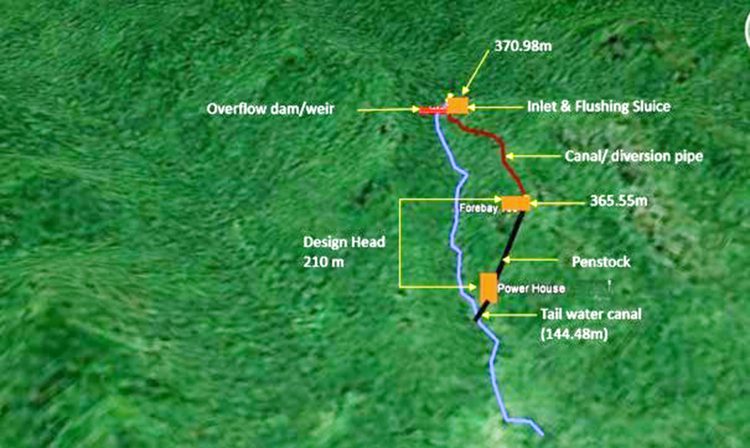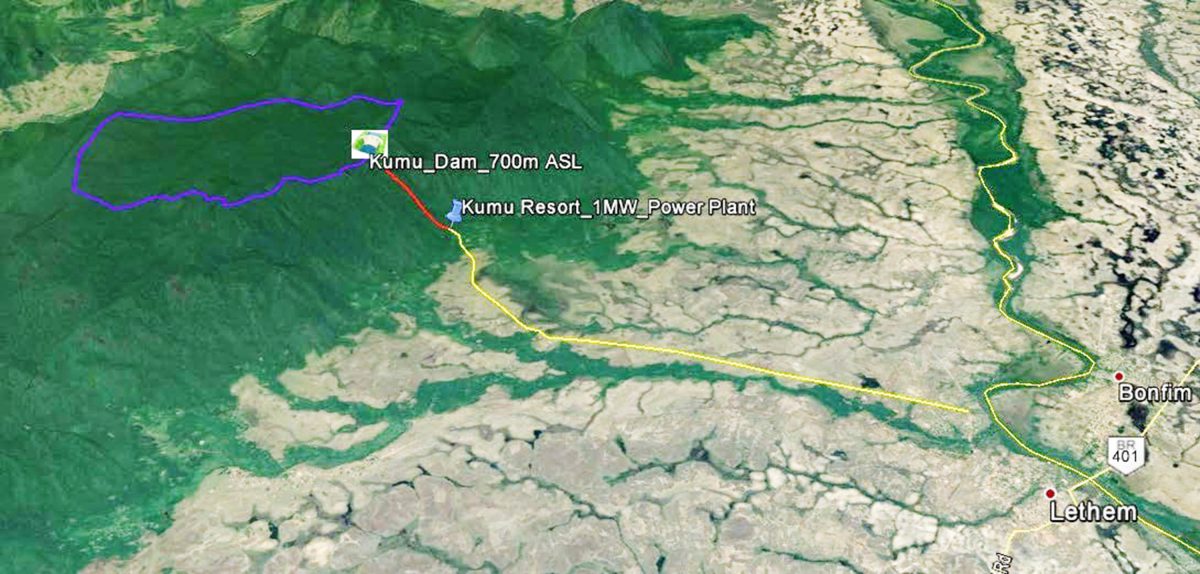With the Kumu River and Moco-Moco Creek expected to experience significant pollution during the construction and rehabilitation respectively of two hydro-power plants, the EPA has recommended that an Environmental Management Plan be put in place to mitigate these adverse impacts during construction for both hydro plants.
The Environmental Protection Agency ( EPA), following its screening of the projects’ application, concluded that an Environmental Impact Assessment (EIA) was not required, and also concluded that the impact scale during the life of the projects was already measured and that these impacts range from low to moderate. The EPA further contended that if the EMP is followed, environmental impacts will also be minimized. The EPA intends to monitor the EMP to assess whether the plan is achieving its objectives, and to constantly review the effectiveness of the measures being implemented. This will allow for the necessary assurances that the projects’ developers are making suitable provisions for counteracting negative impacts that occur throughout the projects’ implementation and operational cycles. “The EPA concludes that there are no significant impacts nor is the project deemed environmentally sensitive. Impacts arising from the construction and operational phases of the project are minor, localized, and acceptable,” the EPA said in its environmental impact screening report.

The screening report agreed that the projects’ activities will definitely impact fish species, terrestrial fauna and sensitive habitats, but concurred that these have also been measured to range from low to moderate. “These impacts are anticipated to be short term. Additionally, pre-construction ecological surveys and associated assessments of the project footprints to establish a robust baseline will be conducted,” the EPA said. The report added that activities as it relates to physical dredging of the area, will see increased sedimentation, which is expected to be short-lived. This, the report said, will have a neutral to low impact on the river fauna and flora because the area is subjected to seasonal sedimentary fluctuations. The report stated that noise pollution will also be low to moderate, occurring on a short-term basis. Noise generated will be localized to the project facilities throughout the construction of the main dams, powerhouse, diversion tunnel and associated transmission lines. In terms of air pollution and the spread of dust, the screening report stated that livelihoods will not be impacted as households are far away from the project site.
The report explained that the impacts from floods, landslides and other potential emergencies will be low to moderate and are likely to occur intermittently. The EPA nonetheless said appropriate emergency plans and maintenance of a high level of staff preparedness for emergencies will be implemented to mitigate any disasters. “A requirement is the preparation of a pre-construction, construction and operational EMP to manage environmental impacts arising from the project along with a corresponding schedule and monitoring of mitigation measures to ensure potential impacts are maintained at insignificant levels,” the screening report added. While the projects are being constructed within the Kanuku Mountains, the report stated that none are located in close proximity to areas that currently enjoy protected status.
The power generation projects are being implemented to provide a reliable supply of electricity to the town of Lethem and peripheral communities, from a renewable energy source. The project, categorized as a sustainable energy solution, will also increase the sum of renewable energy sources in the country’s electrical generation system. The Moco Moco hydro plant will be upgraded to generate 4,565 MWh of power while the Kumu plant will generate approximately 9,700 MWh of energy on an annual basis. The lifespan of this facility is estimated at approximately thirty years, once a rigid maintenance programme is followed. The project is estimated to create permanent jobs for approximately ten persons. The hydropower power plants’ construction and rehabilitation are being executed by the Guyana Energy Agency in collaboration with the Hinterland Electrification Company Inc. (HECI). The defunct Moco Moco hydro power plant is being rehabilitated after many years, and once operational, is expected to increase its power generation capacity. The plant was initially developed in 1999, based on an agreement between the Government of Guy-ana and the People’s Republic of China. However, in 2003, a landslide along the penstock alignment due to heavy rainfall put the plant out of operation.
The Moco Moco Hydro Plant is located on the Moco Moco Creek in the Kanuku Mountains, approximately 20 km from Lethem. The rehabilitation will seek to maintain the current location of the existing hydraulic structure (weir), headrace, forebay, powerhouse, and step up substation and tailwater canal. However, the penstock alignment will be determined when the Geotechnical and Topographical surveys are completed, the developers stated in the project summary. It was noted that water will be extracted along the left bank of the Moco Moco creek. The rehabilitation of the Moco Moco hydropower is being done to the value of US$2.2M and is expected to significantly reduce the cost of electricity to consumers in Lethem. Power generation currently costs US$0.49 kWh, however, with an annual subsidy of US$500,000 per year, consumers are purchasing electricity between US$0.33 -0.40 per kWh. The Kumu Hydropower project, which is also is a run-of-the-river plant, will be constructed to generate an installed capacity of 1.5 MW of power; this project has an estimated construction cost of US$3.9M.
The project summary stated that the hydraulic infrastructure proposed will comprise a 3m high and 20m wide weir. It was explained that the reservoir created by the weir will cover approximately 1 km2 which is currently forested. “A 500mm headrace will be installed along the hillside on the right bank of the river which will extend 500 m from the weir to the forebay. From the forebay, water will flow 1750 m through a 300 mm penstock/pipe that will be fixed along the right bank of the river down to the power house which is 545 m lower than the reservoir,” the summary stated. After passing through two turbines to generate electricity, the water will be returned to the Kumu River through the tailrace channel. In addition, a transformer station and a 14 km transmission line to carry 13.8 kv will connect the powerhouse to the Lethem power grid. The existing road network will be used to transport construction materials to site. However, a concrete walkway will be required along penstock as in the case of Moco Moco, the summary noted.






